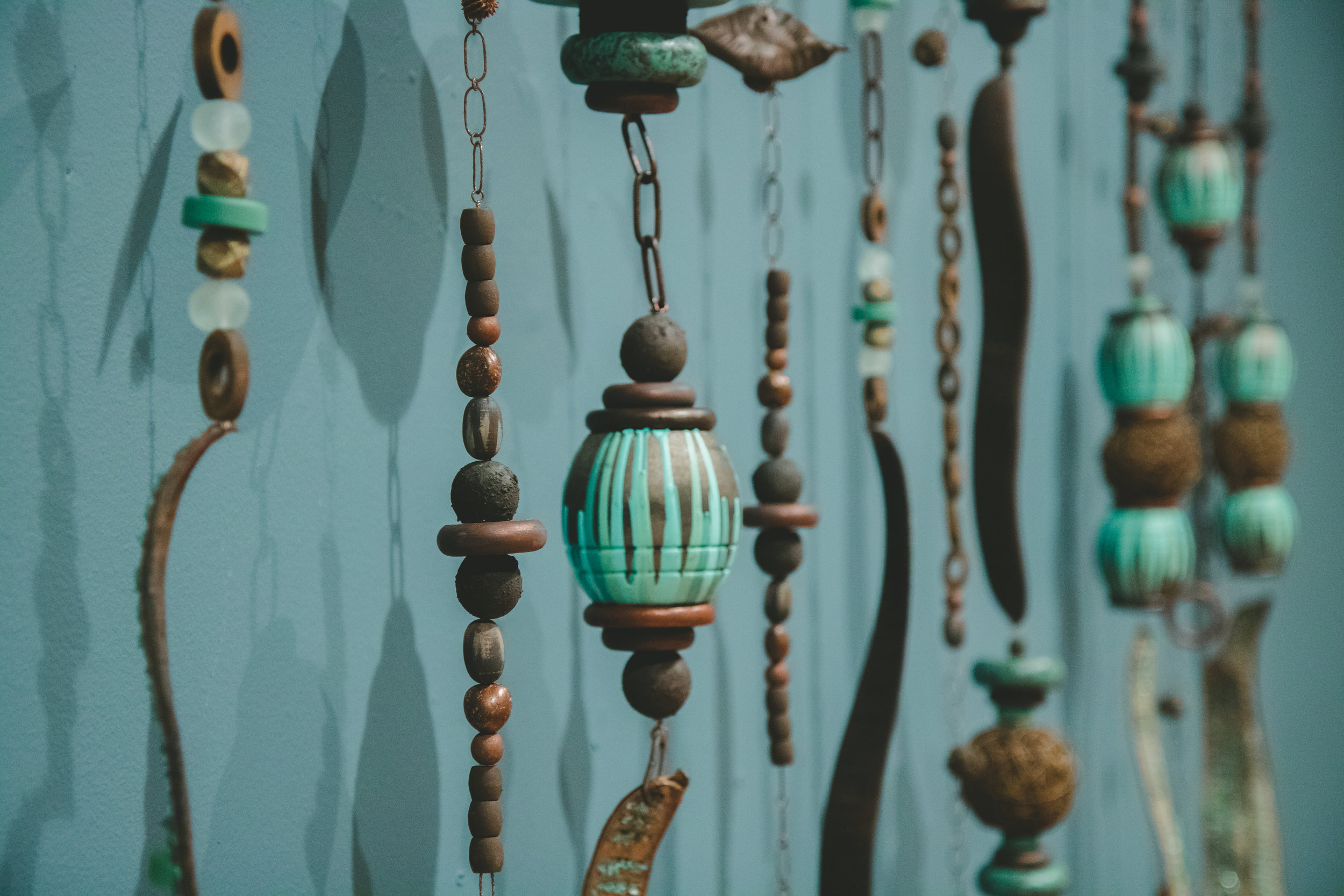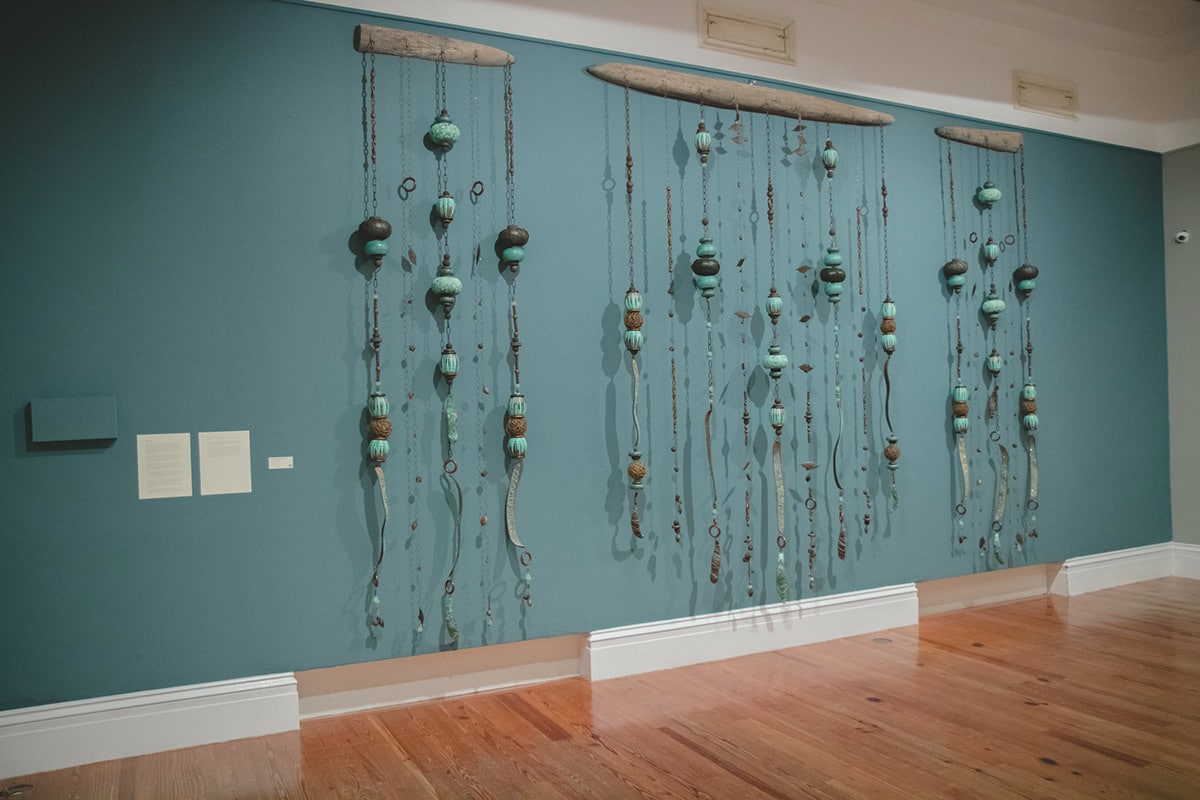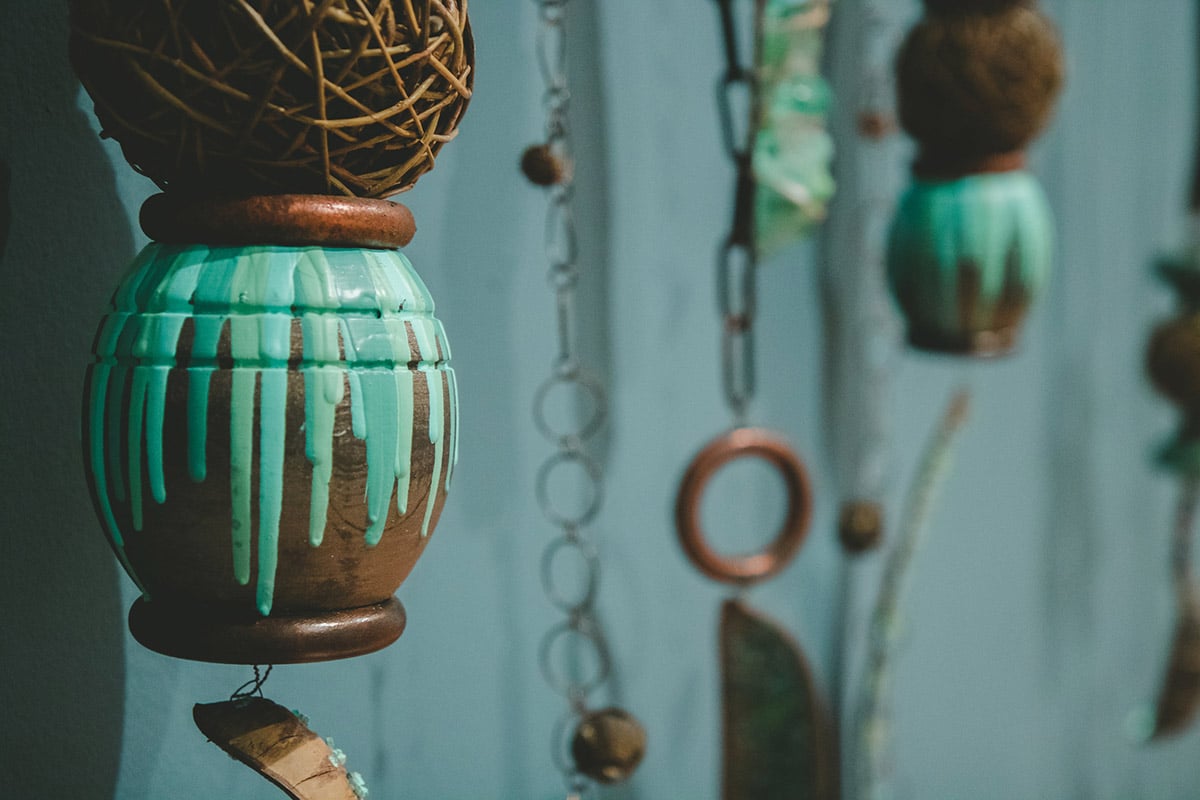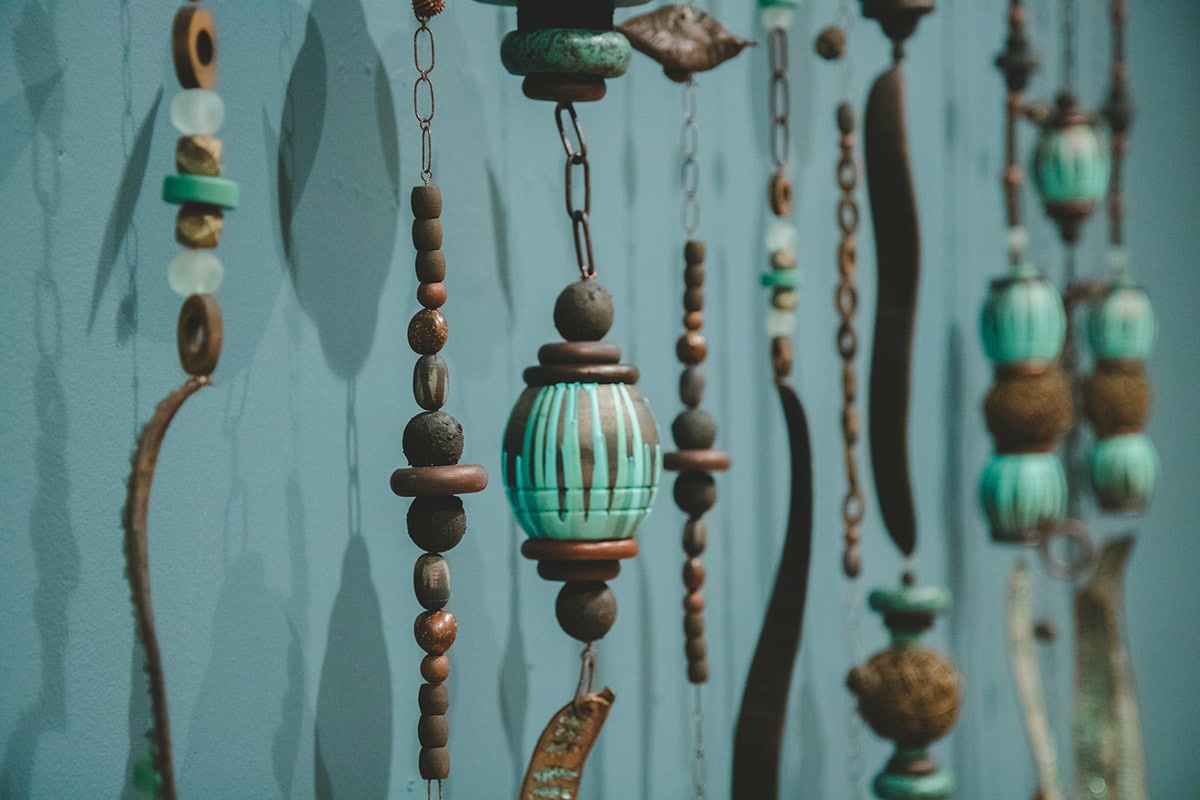
By Letitia Pratt
“You who are so-called illegal aliens must know that no human being is ‘illegal’. That is a contradiction in terms. Human beings can be beautiful or more beautiful, they can be fat or skinny, they can be right or wrong, but illegal? How can a human being be illegal?” Elie Wiesel, 1994
In the past few years, there has been an upswing of anti-immigration ideology worldwide – intensifying with the inauguration of American President Donald Trump – that has become dangerous, and the Bahamian government is not immune. Our country has always grappled with the idea of “otherness” since our own independence; qualifiers like “I am not” became prevailing definitions of Bahamian-ness, and one would often hear prejudiced statements like: I am not Haitian, I am not Jamaican, I am not Trinidadian, used to define ourselves, even though we share deeply intertwined histories with these Caribbean nations.

Invasive Species Amulet, (2018). Saskia Schutte D’Aguilar, Mixed media including driftwood, seed pods [Poinciana, Bahamian Almond, Casuarina, Cypress], copper wire, copper and brass chain, acrylic house paint, sisal rope, recycled Ghanaian glass beads, Ashanti Lost Wax Cast Filigree Brass Beads, turned hardwood components (furniture parts, train wheels, doll heads, curtain rings, beads), sea glass, sand and plasticine. Dimensions 120 x 188″.
These definitions are contingent upon finding differences between us and them, a problematic method that can enable hostility and abuse. Thus, as America emerges from its longest Government shutdown in history – surpassing the 21-day shutdown of 1996 – over negotiations of a border wall, and as our own Bahamian government deals with the touchy topic of immigration and otherness, Saskia D’Aguilar’s wall mobile, Invasive Species Amulet, (2018) becomes painstakingly relevant.
Writer, Nobel Peace Prize Winner, and Holocaust Survivor Elie Wiesel’s argument, “no human being is illegal” is the main theme that this giant sculpture tackles. Arresting in its monumental size, the piece itself forces you to not only notice it, but to symbolically confront the issues of immigration rights, and the sheer absurdity of treating fellow human beings – beautiful human beings, she argues along with Wiesel – like their very existence on this land is breaking some natural law. Built by assembling Poinciana pods with driftwood and sea glass, the Invasive Species Amulet is a striking metaphor for immigrant peoples and their resilient ability to travel across waters to find a new home, despite locals deeming them as unnatural and unwanted parts of the landscape.

Detail of the Invasive Species Amulet, (2018) by Saskia Schutte D’Aguilar.
It is certainly an apt metaphor. In her own explanation of the piece, D’Aguilar outlines her decision to feature the poinciana, stating that she intended first of all to highlight the beauty of the plant despite its branded ‘invasiveness’. “Originally from the dense emerald-green jungles of Madagascar, [the poinciana] began their precarious route drifting south in the stormy Indian Ocean,” she writes, “looping around the Cape of Good Hope, through the turbulent Atlantic Ocean, finally landing in The Bahamas, where despite their grace and beauty they are often referred to as an ‘invasive species’”. With this work, D’Aguilar argues that the value of any natural being — any living part of the earth – is inherent, something that cannot be negotiated, regardless of its origin.
The very concept of invasiveness within the environmental community outlines that a non-native species must be harmful to the natives in order to survive. When applied to human lives, this becomes a dangerous ideology by suggesting that the very existence of an immigrant is a threat to Bahamian culture and way of life. D’Aguilar’s Invasive Species Amulet asserts that adaptation to new landscapes, environments, and peoples is a natural part of survival. Her own immigration activism is an attempt to curb the harmful effects of this dangerous ideology; she often spends her daily life assisting non-nationals with attaining their documentation for citizenship. She helps write reference letters and procures academic and inoculation records; she follows up with the status of long-standing applications; she takes children to acquire their passport photos, quite often arranging lawyers for affidavits and paying all associated fees.
The Invasive Species Amulet is the first time her activism has transposed to the artistic world – communicating her frustrations in a very different way. “What is so frustrating is that the immigration authorities seem to believe that every parent exercises a high degree of precision, in safely storing all types of paperwork that only needs to be produced for the authorities when a child reaches the age of 18 or applies for a passport,” D’Aguilar states, outlining her annoyance with the established rules to gain citizenship in this country. “I have definitely observed that in families with significant economic challenges, there is frequently a major challenge in producing the documents necessary for a smart NIB card, a first-time passport, or a citizenship application. I wonder how the requirements for producing documentation could be made less discriminatory for those in our society who already face a myriad of challenges?” Like the poinciana plants’ need for a nurturing environment in order to bloom, the non-national’s need for care is something she understands deeply. Her own struggles in gaining citizenship as the Dutch wife of a Bahamian man has fueled her meticulous opposition to this tedious process . This frustration is reflected in her process of creating the amulet itself – she even includes the fingerprints of the non-nationals she works with as a significant decorative detail – and with her nurturing, she transforms the poinciana pods into a new object of beauty.

Detail of the Invasive Species Amulet, (2018) by Saskia Schutte D’Aguilar.
Equating the symbol of the tree with human life is not a new idea. Many religious folk stories often paint the plant as the source of life – think Christianity’s Tree of Life or Islam’s Tree of Immortality – and used it to represent knowledge, family, and the enlightened self. In the romantic era, the tree, like many other plants, was used to communicate the emotional psyche of the human condition, often in opposition to the industrial advancements of a neo-classical society that heralded rational logic over emotional intelligence. Its history as a symbol ultimately came to represent humanness in the deepest of levels; D’Aguilar’s Invasive Species Amulet utilizes this language to oppose toxic rules of society as only a true romantic would.
While her own experience of gaining citizenship was hard, she ultimately knew that her problems would be resolved. She understands that this is a privilege that is not assured for most immigrants, especially non-white persons. “For many Black children (mostly of Haitian heritage), they lack that certainty,” she ruminates. “You can see the worry on their faces as they never feel fully settled in the land where they were born. How terrifying it must be for them to constantly worry if family, friends or neighbours will be apprehended for some sort of immigration violation? To wonder if at the beginning of the school year they will be barred from attending? To fear expulsion from a sports programme because they don’t have the right paperwork?”
Her questions are become increasingly necessary in an intolerant political climate. In the past year, the Bahamian government decided to confront the perceived issue of immigration by creating a Shantytown Action Task Force, an organisation whose sole purpose is to tear down housing communities created outside of government building codes – housing communities which are occupied by people who have difficulty obtaining citizenship, and consequently, are unable to build or rent housing legally. This method – like Donald Trump’s promised border wall to keep out Mexicans and other brown people south of the border – is a non-solution to a self-imposed problem and is a near-perfect example of how we continue to dehumanize Haitian and Jamaican nationals in this country. Much like the romantics, D’Aguilar presents social activism as a solution to these outdated behaviours and ideologies.
The Invasive Species Amulet is a necessary call to action for our country to empathize with people from all walks of life. Like the romantic painters that heralded the beauty of the landscape in order to highlight its importance, D’Aguilar uses this amulet to metaphorically highlight the beauty of human lives. The poinciana’s endurance – from emigrating here via oceans and subsequently adapting to this environment – is a fitting representation of immigrant peoples who constantly withstand societal abuse. D’Aguilar’s amulet is not only a warning against our countries atrocities, but a celebration of human life. In the same way in which we have come to anticipate the poinciana’s stunning crimson blooms during summer, we will, D’Aguilar argues, learn to appreciate the value that new peoples bring to The Bahamas.

